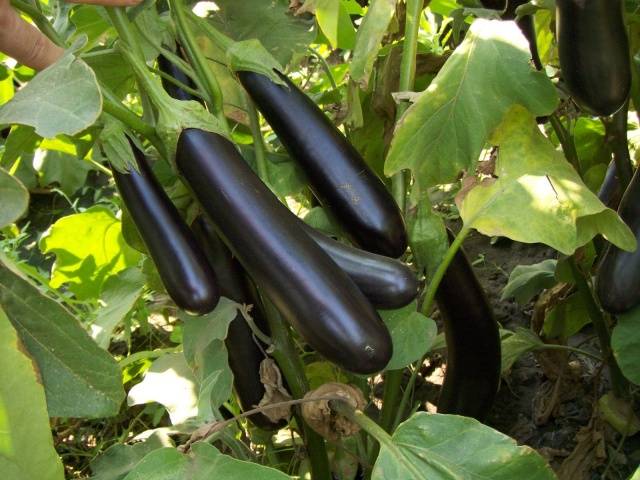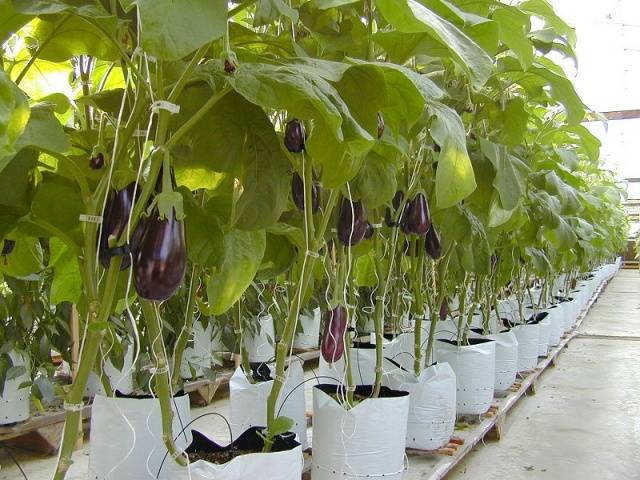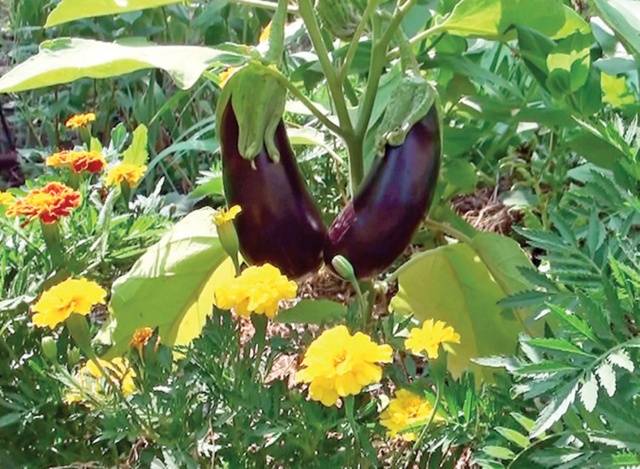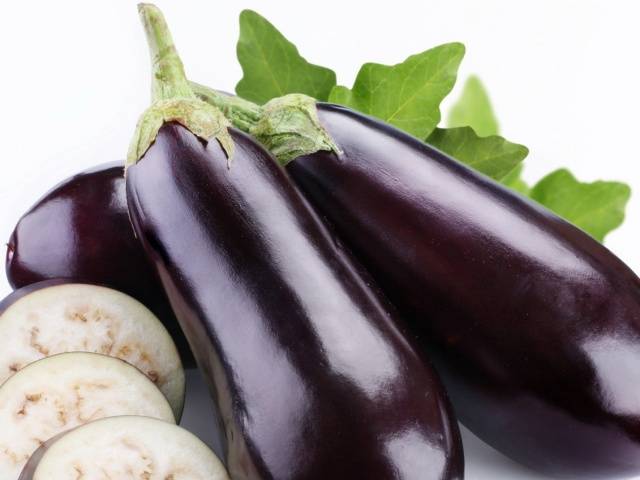Content
Eggplant is a heat-loving crop that migrated to Russia from India. To grow these plants, high temperatures are needed, so they are planted in open ground in the southern regions.
Eggplants can also be planted in greenhouses in central Russia. One of the common varieties shown in the photo is Alekseevsky. You can get a good harvest from the bushes even in temperate climates.
Description of the plant
The Alekseevsky variety belongs to the early eggplants, reaching ripeness 98-132 days after emergence. Gives a bountiful harvest. Eggplant forms a slightly spreading bush of small height - up to 70 cm.
The stem has slight pubescence. The leaves, as can be seen in the photo, are medium in size, with uneven edges.
The variety is zoned primarily for the North Caucasus and the Lower Volga region. However, this eggplant can be planted in a greenhouse or in a film tunnel in central Russia. The variety is also grown in Moldova and Ukraine.
Fruit characteristics
The Alekseevsky variety produces cylindrical fruits. Their weight reaches from 100 to 190 grams, the average length is up to 15 centimeters. The skin of the eggplant is smooth, glossy, and dark purple in color. The pulp of the fruit is white and has no bitter taste.
The variety has the following advantages:
- high productivity;
- rich skin color;
- correct and uniform shape of the fruit;
- taste qualities.
Eggplant has high taste and is versatile in use. The fruits can be used to prepare sauté and other dishes, as well as for preservation. Transports well.
On the calyx of the eggplant, the thorns are either absent or present in small quantities.
Seed preparation process
Before growing seedlings at home or in a greenhouse, you need to prepare the seeds well. As you know, germination of eggplant seeds is difficult. To get a good result, the following steps will be required.
- Checking the quality of seeds. To ensure that the planted seeds will sprout, they are first soaked in warm water. After waiting 5 minutes, the floating seeds are separated. Those that have risen are suitable for landing.
- Soaking before sowing. To facilitate seed germination, they should be placed in aloe juice for a day.
In order for seedlings to grow strong, careful soil preparation is equally important. Eggplant is a crop that is demanding on soil composition. It is preferable to use turf soil for sowing seeds. It is enriched with peat, humus, and wood ash, sawdust and superphosphate are added.
As for containers, use special cassettes, plastic cups or large containers. The seeds are lowered into the soil to a depth of 1.5 cm. Then the containers with seedlings are covered with film until shoots emerge. They are left at a temperature of 25 degrees.
Features of growing eggplants
Eggplant is first sown as seedlings. For seedlings to appear, a temperature of about 25 degrees is needed.In such conditions, sprouts can be seen within two to three weeks.
Seedlings can be placed directly in the greenhouse. Before planting seeds, perform the following operations:
- pickle the soil with a solution of potassium permanganate, it is better to do this twice;
- seeds are sown at intervals of 3 cm;
- until seedlings appear, maintain a temperature of 25 degrees;
- when the seeds have hatched, the temperature is lowered to 18 degrees to avoid stretching the sprouts;
- If some shoots still stretch out, add soil.
If the seeds are purchased with a reserve, you can sow them with a gap of 1 cm, and leave 4 cm between the rows. After the emergence of seedlings, their condition is assessed. The weak ones are cut off, and the strongest ones are left at a distance of 3 cm from each other.
It is not necessary to use fertilizing when growing eggplant seedlings. For the seeds to germinate, the soil temperature must reach at least 14 degrees. Otherwise they will not germinate.
Planting seedlings in the ground
The optimal age of eggplant seedlings for transplanting into the ground is 60 days. It is recommended to harden the sprouts first. To do this, the sprouts are kept for 2 hours at a temperature of 15 degrees. Within a few days, the temperature is reduced to street readings. The exposure time is extended to 24 hours.
For an eggplant bed, it is better to choose an area with fertile soil in a well-lit area. It is also important that the place is protected from the wind. In this case, it is preferable that the site is located on a hill.
It is necessary to take into account what crop was previously grown in this area, and what neighbors the eggplant will have.
- The best predecessors are onions, carrots, cabbage and legumes. You should not plant eggplant after nightshade crops. These include peppers, tomatoes, potatoes and the eggplant itself (even a different variety). Before planting, the gap must be maintained for at least three years.
- It is important to pay attention to what crops are located in the neighborhood. Eggplant does not tolerate shade. Therefore, there should be no crops with tall bushes nearby. The best neighbors for eggplant are garlic, onions, and sorrel.
For each sprout in the garden bed, you need to leave a space of 60x40 cm. When the temperature drops, the first flowers on the bushes may fall off. There is no need to be afraid of this; this fact does not indicate poor quality of seeds or an incorrectly chosen variety.
How to care for eggplants in the garden
Immediately before planting, prepare a hole in the soil, which is spilled with two liters of water. Plants can be planted if the soil has warmed up well and the threat of frost has definitely passed.
To grow your own eggplant, you need to care for the seedlings even after planting them in open ground. This includes:
- regular watering;
- deletion weed;
- protection from pests.
You need to water the eggplant once every 10 days. To calculate the volume of water for irrigation, you need to remember: the soil must be moistened to a depth of 50 cm.
A great danger to a crop such as eggplant is Colorado beetle. Among the remedies often used by gardeners are tinctures of garlic and pepper; it is worth noting that their effect is only insignificant. The use of chemicals will also not be to everyone's liking.
A good option for protecting bushes is agrofibre. The eggplant is covered with this soft material.As the bushes grow, the covering rises without causing any harm to the leaves.
Another important point is that plants need feeding. This procedure is carried out in three steps:
- During the flowering period.
- Before the main harvest.
- After removing the vegetables.
To ensure large fruits, only the 4 strongest branches are left on the main stem. The rest are cut off so that moisture and nutrients are not taken in vain.
Reviews from gardeners about planting eggplants
The issue of planting eggplants is of interest to many gardeners. Further, several reviews have been collected about the Alekseevsky variety, which is shown in the photo, and other varieties.
The Alekseevsky variety is known to many gardeners. Although it is zoned for the North Caucasus and the Lower Volga region, such eggplant can be grown under film cover in the central regions. The bushes produce oblong fruits up to 15 cm long and weighing about 150 g.They have excellent taste and are suitable for both sautéing and canning.

















